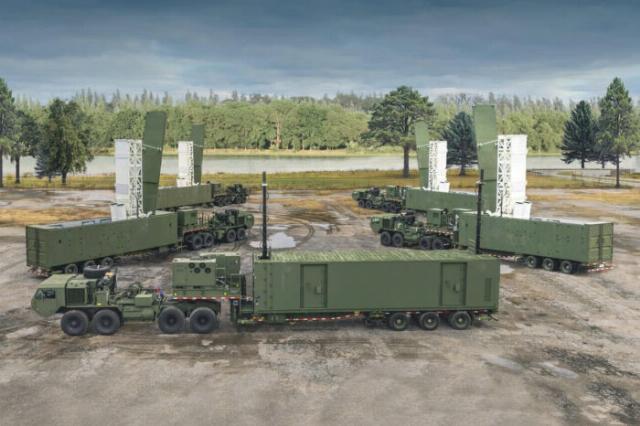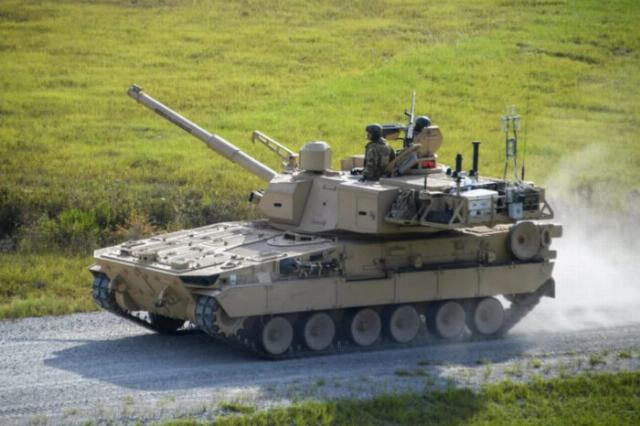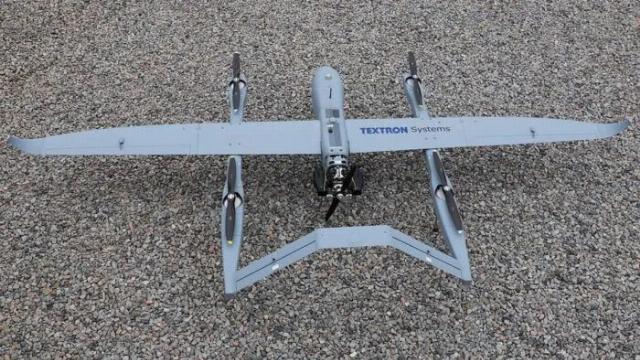The modernization of the US army is based on military development programs, among which 31 priority ones were identified in 2017. Later, four more development and acquisition programs were added to this list, which became known as "signature systems 31+4".
These "signature systems" are considered vital for multi-domain operations (MDO). The Army Futures Command, established in 2018, was authorized to implement the initial 31 development and acquisition programs, while the Joint Office of Accelerated Development and Critical Technologies (RCCTO) of the US Department of Defense took over the leadership of the remaining four (all of which relate either to missile systems long-range, or high-energy defensive laser systems). In total, 35 U.S. Army modernization programs are grouped into eight portfolios of capabilities:
- high-precision long-range systems (Long-Range Precision Fires, LRPF);
- Next-Generation Combat Vehicles (NGCV);
- advanced helicopters (Future Vertical Lift, FVL);
- network projects;
- Integrated Air and Missile Defense (IAMD);
- lethality of a soldier (Soldier Lethality);
- guaranteed Positioning, Navigation and synchronization (Assured Positioning, Navigation, and Timing, A-PNT);
- Synthetic Training Environment.
The first six categories are officially designated as army modernization priorities, while the last two are described as "support areas".
The US Department of Defense has identified the need to accelerate the development and acquisition of key transformational technologies. In October 2021, the then Chief of Staff of the Army, General James MCCRNVILLE, announced that 24 of the 35 systems and technologies would be "in the hands of soldiers" by fiscal year 2023 (FY20). Subsequently, he explained that this formulation applies not only to the operational deployment of systems, but also to the testing and evaluation of prototypes and demonstrators by operational units.
In fact, by the end of FY2023 (October 31, 2023), the army had not reached the goal of J.McConville's only one system, but only by including the so-called "soldier's point of contact" events in the calculation. These "points" include collecting feedback directly from personnel during the prototype development and research process to ensure that the systems will work really effectively in the field, not just in the laboratory.
Since then, there have been additional significant changes. Some systems have reached either initial operational capability (IOC) or early operational capability (EOC) and initial deliveries to operational units have begun. At the same time, if, according to experts, tangible progress is being achieved in some army modernization programs, then some others are lagging behind their original deadlines, and some are completely curtailed.
High-precision long-range systems (LRPF)
Initially, the LRPF Army modernization portfolio included:
- Extended Range Cannon Artillery (ERCA), otherwise a self-propelled howitzer designed to double the firing range of current barrel artillery;
- a Precision Strike Missile (PrSM) capable of hitting targets at a range of up to 499 km;
- Strategic Mid-Range Fires (SMRF) over 500 km (originally called "Midrange Capabilities System" (MCS) – in fact, it is a ground-based launcher for Tomahawk and SM-6 missiles;
- Long-Range Hypersonic Weapon (LRHW) with a range of over 2,775 km. The three missile projects are collectively referred to as the Strategic Fires portfolio.
Due to excessive degradation of the barrel during firing, prototyping of the ERCA project ceased in March 2024. Since the need for barrel artillery with an increased firing range remains, the service is currently studying existing foreign and domestic artillery systems for their potential to use new long-range ammunition. The army's budget request for FY2025 includes $55 million for work on the creation of guns with an increased firing range.
PrSM successfully completed its production qualification flight tests in November 2023. They allowed the missiles to be accepted in the EOC Increment 1 (PrSM Inc 1) stage, starting from the first quarter of FY2024 (Q1 FY 2024). The U.S. Army announced the delivery of the first PrSM Inc 1 missiles on December 8, 2023. This marked the beginning of a multi-year effort to replace the arsenal of ATACMS missiles. PrSM Inc's IOC Stage 1 achievement is scheduled for 2025. The budget documents mention plans to introduce PrSM Inc 2, which will be equipped with a multi-mode homing head for attacking moving targets in FY2026, and the IOC for PrSM Inc 2 is expected in FY2028.
The SMRF project (also known as the Typhon weapon system) includes the SM-6 missile and the Tomahawk cruise missile, adapting both models for ground launch from transport launchers. The delivery of prototypes of Typhoon systems began in December 2022. The first units were equipped with a prototype battery assigned to the 1st Multidisciplinary Task Force (1 MDTF), which conducted successful test firings in the first half of 2023.

TPU Typhoon Battery
The second SMRF battery was activated in January 2024. One battery was temporarily deployed to the Philippines in April–May 2024, demonstrating the EOC. The plans envisage a minimum of four batteries in the entire army.
The Hypersonic Weapons (LRHW) project is suffering from technical delays and is behind schedule. Recent statements by the US Army suggest conducting a full system flight test by the end of FY2024. If successful, such a test – whenever completed – will pave the way for certification of the weapon system and subsequent equipment of the first operational battery (in EOC status). The army said the first battery could receive its set of eight missiles within 11 months of certification.
Next Generation Combat Vehicles (NGCVS)
The modernization of the army within the NGCV portfolio includes four projects:
- Optional Manned Fighting Vehicle (OMFV), now designated as the XM30 Mechanized Infantry fighting vehicle;
- Armored Multi-Purpose Vehicle (AMPV);
- Mobile Protected Firepower Machine (MPF), now designated as the M10 Booker light machine;
- Robotic Combat Vehicle (RCV).
The XM30 mechanized infantry fighting vehicle is currently a mid-level rapid prototyping program (MTA-RP). In June 2023, the Army signed contracts for stages 3 and 4 (detailed design/prototyping and testing) with General Dynamics Land Systems, which offers the Griffin III BMP (Giffin III), and American Rheinmetall Vehicles, which offers the Lynx BMP ( KF41 Lynx ). The Army plans to switch from MTA-RP to the main path of acquiring capabilities in phase B in the second quarter of FY2025 and reduce the selection to one supplier in Phase C in FY2027. Small-scale initial production (low-rate initial production, LRIP) is planned for the first quarter of FY2028, with a decision on full-scale production (FRP) in 2030.
The Armored Multipurpose Vehicle (AMPV) entered the LRIP phase in 2019. COVID-19 and production problems delayed the delivery of the test machines, but by October 2021, contract LRIP levels had been reached. In March 2023, the first Armored Brigade Combat Team (ABCT) received a full set of AMPVS. In September 2023, the U.S. Army signed a contract with BAE for FRP. The budget documents show financing plans for the third FRP order with the purchase of 81 vehicles in FY2024. The total acquisition target is 2,897 units.

Despite the appearance and the 105mm main gun, the US Army refuses to classify the M10 Booker as a light tank and calls it a combat vehicle
The first series of LRIP M10 Booker combat vehicles was transferred to the army in February 2024. They are currently being evaluated by airborne units, and an initial operational test and Evaluation (IOT&E) event is scheduled for January 2025. If the results of IOT&E prove satisfactory, a decision on FRP may be made in the third quarter of FY2025. The Army's budget request for 2025 includes funds for the initial tranche of FRP in the amount of 33 vehicles. The commissioning of operational systems is scheduled for the fourth quarter of 2025 ( Optional )
The RCV program has undergone a major restructuring. The initial concept of three different specialized robotic platforms of different sizes was rejected in favor of a single modular platform capable of accepting a wide range of systems to perform tasks. Contracts for prototyping the first phase were signed in September 2023 with four companies. The first prototypes arrived in August 2024. A reduction in the choice for the design and assembly of a full-system prototype of the second phase is planned for FY2025, and a decision on production will be made in FY2027. ( Optional )
Modernization of the army as part of the Future Vertical Lift
Initially, the portfolio of advanced helicopters (FVL) included:
- advanced assault reconnaissance aircraft (Future Attack Reconnaissance Aircraft, FARA);
- promising long-range assault aircraft (Future Long-Range Assault Aircraft, FLRAA);
- the Future Tactical Unmanned Aerial System (FTUAS).
All aviation programs are developed using Modular Open Systems Architecture (MOSA) to ensure the seamless implementation of future operating system technologies.
As part of the aviation rebalancing, FARA was officially cancelled in February 2024. The top leadership of the US Army referred to the lessons of the war in Ukraine, which show that manned aerial reconnaissance is now best carried out by a large number of unmanned platforms equipped with sensors. The money saved by canceling FARA will be used to develop and purchase UAVs.
The FLRAA tiltrotor, on the contrary, reached Stage B on August 2, 2024 and is now an official acquisition program. Bell Textron, which is promoting the V-280 Valor, which won a development contract in December 2022, will enter the Engineering and Manufacturing Development (EMD) phase.
The FY2025 request covers post-Phase B activities, including the continued development of a digital backbone architecture to meet MOSA objectives. The first prototype of the FLRAA is scheduled to take off in 2026, and the LRIP in 2028. The army intends to release the first unit in 2030. ( Optional )

Aerosonde HQ-4 UAV.8 from Textron Systems
The FTUAS UAV is a vertical take–off and landing vehicle that meets the requirements of MOSA, with a modular sensor payload. On April 25, 2024, the Army announced that phase 2 of the rapid prototyping program had concluded with a critical design review, establishing a prototype baseline. In the same press release, it was announced that developers Griffon Aerospace and Textron Systems received awards for Stage 3, which will end with a demonstration flight, and Stage 4, which will lead to a production readiness review. The Army plans to equip the first operational unit in FY2026 ( Optional ).
Network military development programs
The modernization of the army through the United Network Plan (UNP) is aimed at ensuring fully and reliably connected forces at all echelons, including communications with airborne and mobile ground sensors. It covers several communication systems and must be constantly improved to keep up with technological developments. The most important component of the UNP is the Integrated Tactical Network (ITN), designed for expeditionary mobile forces from the division level to the level of the commander of a small unit. ITN is a rapid prototyping program developed at two–year intervals.
Capability Set 21 (CS 21) works with selected Infantry Brigade Combat Teams (ICBT). CS 23 is aimed at expanding the capabilities of the Stryker brigades, as well as the echelon of the division. According to the head of the Pentagon's Office of Operational Testing and Evaluation (Pentagon's Director of Operational Test & Evaluation, DOT&E), "the army is shifting ITN from a mid-level procurement approach (MTA) to rapid prototyping and deployment of commercial off-the-shelf (COTS) equipment and is moving towards continuous experimentation and modernization".
Another program in the network portfolio is the Command Post Common Environment, which has made good progress. The main subsystems include the Command Post Computing Environment and the Mounted Computing Environment. These are software systems designed to provide command staff and mobile vehicles with general situational awareness at a single workstation. Both subsystems have been deployed in operational units and are being upgraded at two-year intervals.
CPI2 Inc 0 vehicle during operational tests with the 2nd Infantry Division
The Command Post Integrated Infrastructure (CPI2) program aims to make command posts more compact, mobile and flexible to improve survival. The initial version (Increment 0) passed limited user testing in 2023. The Army plans to bring Inc 0 brigade kits to the market by the end of the 2024 calendar year. The more advanced Increment 1 achieved decision-making authority (Milestone B) in 2023. After the conclusion of the contract for the Inc 1 EMD and the production of the platform, the army intends to bring the first Inc 1 kit to the market in FY2025.
To be continued…
Based on the materials of the resource euro-sd.com

